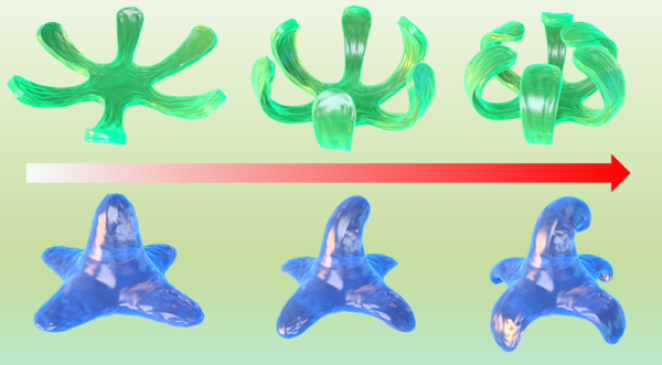Better bioink
Text block one Heading link

Where standard 3D printing uses a digital blueprint to manufacture an object out of materials like plastic or resin, 3D bioprinting manufactures biological parts and tissues out of living cells, or bioinks.
A fourth dimension — shape transformation over time — can be achieved by incorporating materials that enable printed constructs to morph multiple times in a preprogrammed or on-demand manner in response to external signals.
Bioprinting 4D constructs provide opportunities for scientists to better mimic the shape changes that occur during the development, healing, and normal function of real tissues and fabricate complex structures.
Professor Eben Alsberg has developed a new cell-laden bioink, composed of tightly packed, flake-shaped microgels and living cells, for bioprinting 4D constructs. This new system enables the production of cell-rich bioconstructs that can change shape under physiological conditions.
His team’s experiments resulted in a variety of complex bioconstructs with well-defined configurations and high cell viability, including a 4D cartilage-like tissue formation. Further designs demonstrate complex, multiple 3D-to-3D shape transformations in bioconstructs fabricated in a single printing.
“This bioink system provides the opportunity to print bioconstructs capable of achieving more sophisticated architectural changes over time than was previously possible,” Alsberg said. “These cell-rich structures with reprogrammable and controllable shape morphing promise to better mimic the body’s natural developmental processes and could help scientists conduct more accurate studies
of tissue morphogenesis and achieve greater advances in tissue engineering.”
“This is the first system that meets the demanding requirements of bioprinting 4D constructs: load living cells in bioinks, enable printing of large complex structures, trigger shape transformation under physiological conditions, support long-term cell viability and facilitate the desired cell functions such as tissue regeneration,” said Aixiang Ding, postdoctoral research associate. “We are endeavoring to translate this system into clinical applications of tissue engineering, as there is a critical shortage of available donor tissues and organs.”